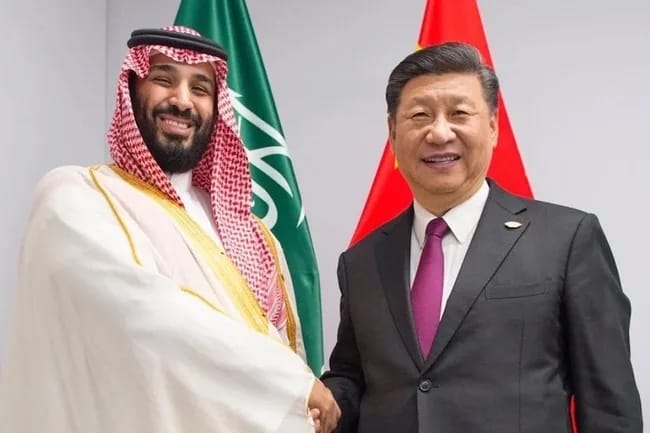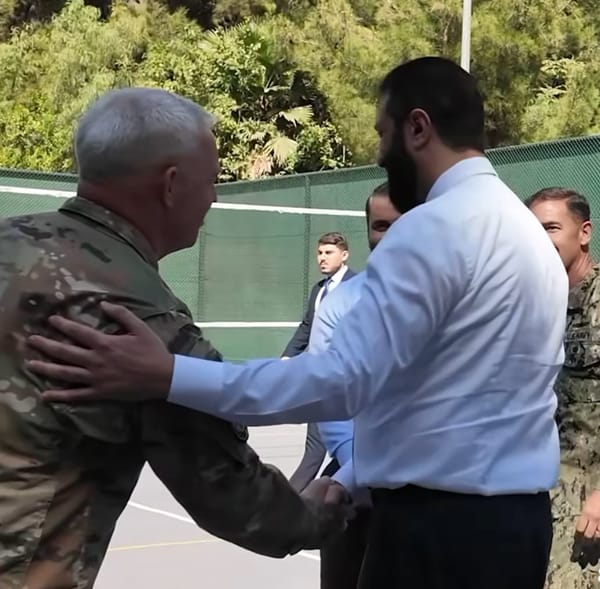What China wants in the Middle East

A little book review essay on a critical subject to launch the new semester.
Thank you so much for subscribing to Abu Aardvark's Ghost and the MENA Academy (sounds like a killer indy band, right?). Moving from Substack to Ghost raised the costs of maintaining the blog considerably – Ghost's price tiers are based on the total number of subscribers. I rely on my core supporters with paid subscriptions to keep it going, and would deeply appreciate more. So I'm running a 25% off annual subscription promotion for the new academic year. I know things are tight for everyone in these terrible times, but if it's possible for you to join the club it would mean a lot. Thanks!
Donald Trump's systematic evisceration of American influence, soft power, alliances and global commitments (building on Joe Biden's catastrophic support for Israel's war on Gaza) have revived long-running questions about whether China can or will take advantage in the Middle East. Defenders of the two administrations argue that American support for Israel and bombing of Iran's Fordow nuclear complex proved to the region that the United States is a reliable and formidable ally, while China's inaction over Gaza, the Israel-Iran war, and even Yemen's blockade of Red Sea shipping revealed it to be a paper tiger. Critics point to the ever growing outrage across the region over American policies and China's ever growing, patient building of economic and infrastructural relationships with the Gulf. Many in Washington see China and the US locked in a Cold War style struggle for the region, while others see significant shared interests in stability and the flow of oil.
Much of the debate in Washington has always seemed to be built on projections and mirror imaging, with China standing in for domestic political arguments and US-centric fantasies of fading or renewed global order. A few years ago, I blogged about Dawn Murphy's important book on China and alternative regional orders. Now two short new books redirect those questions by focusing squarely on China's relationships with the Gulf on their own terms. Mohammad Alsudairi and Andrea Ghiselli's Narratives of Sino-Middle Eastern Futures (Cambridge Elements, 2025) offers a close study of the public discussions of Saudi-MENA relations in the semi-official public sphere to track how the policy establishments in China, Saudi Arabia, and Assadist Syria viewed China's role. Jonathan Fulton's Building the Belt and Road Initiative in the Arab World (Routledge, 2025) brings a more concrete focus, showing in formidable detail how China and the Gulf states have planned and actually begun to implement the Belt and Road Initiative. Together, they offer a portrait of a China that is building its position in the Gulf for the long term and is concerned about the possibility of sudden swings in the American posture, but for the moment has little interest in mounting a direct challenge to the US-led regional order. Neither sees a Pax Sinica as a realistic prospect in the near to medium term, and neither sees any real appetite for a greater Chinese security role that might challenge the United States.
Alsudairy and Ghiselli do a major service by translating and closely analyzing public policy debates, speeches, and publications in both Chinese and Arabic. While I was already familiar with most of the Arabic perspectives from Saudi Arabia and Syria, others more steeped in the American debate will likely find them instructive. I would reckon that the Chinese language perspectives and arguments will be newer to most MENA specialists, and in this post I focus on that contribution. I found it truly fascinating to see the similarities and differences in Chinese policy analysis compared with the familiar Washington debates, with perhaps more overlap than one might expect but also with significant differences in emphasis and analysis. China sees the same American retrenchment ("strategic contraction") and the same regional interests which dominate the Washington debate – but sees more opportunities in the region for stabilizing US-China relations than for competition. he global competition with the US makes the Middle East "increasingly relevant in their eyes as a consequence of great power rivalry, but only up to a point."
Perhaps the most important corrective to my own thinking about China and the Middle East from their book is the extent to which the region remains a second or third tier foreign policy priority. Probably because of my own Middle East-centrism, I've always assumed that China's need for oil and gas generated profound national security interests which would inevitably demand that it develop the military capabilities to protect it if needed – and that either precipitous American decline (inability to protect the flow of oil) or aggressive American pressure on China (threatening to cut off the flow or restrict it) would eventually push China to do what Realism would predict any great power would do. But that's not really what comes across in Alsudairy and Ghiselli's account of Chinese foreign policy thinking and debate. While there seems to be real debate, the dominant perspective seems to be that the Middle East "is a somewhat marginal region in terms of the PRC's global economic interests" - especially since the primary interest, oil imports, are not under serious threat.
Alsudairy and Ghiselli walk readers through the policy debates about how China should deal with the Middle East given these assumptions about its stakes. That debate sees the Middle East as "an extremely turbulent region that is still in the midst of re-ordering itself", with instability "understood to be rooted in local failures of governance on the one hand, and the absence of a stable balance of power at the regional level on the other." Development and investment, then, alongside avoiding open military engagement or security entanglement, seems to make the most sense. While some analysts call for more aggressive postures, particularly in light of their reading of American intentions, the vast majority in this account "clearly advocate for continuity... they oppose any and all military commitments... as the costs and risks would be far higher than any real gain." I wonder if this free riding consensus can survive the second Trump administration, a question briefly taken up in the book's conclusion but inconclusively for obvious reasons.
Fulton's book might be seen as fleshing out the material foundations for the ideational aspects discussed by Alsudairy and Ghiselli. Fulton, who runs an extremely useful blog and podcast on China-Middle East relations and writes frequently on the topic, here gives a concise and authoritative analysis of Chinese thinking and practice on development and investment in the region. He builds his analysis of the Belt and Road Initiative off of Xi Jinping's 1+2+3 slogan articulated in 2013: one, energy at the core; two wings, infrastructure and trade/investment; three breakthroughs, nuclear and space and new energy. Like Sudairy and Ghiselli, Fulton sees this approach as a dominant one in China's thinking about the Middle East on its own merits, not just a stepping stone towards eventual military or security domination.
Fulton carefully traces the dramatic evolution of Chinese energy investments and imports across the region, as well as what appears on paper to be a formidable array of strategic partnership agreements, trade and investments. I found the detailed discussion of those investments, from MOUs with Aramco to the Duqm projects in Oman, to be extremely helpful for understanding both the impressive scope and the real limitations of these partnerships. He offers a realistic, detailed view of the extent and purposes of Chinese investments (mostly in the energy sector) and the activities of Chinese companies across the region - not just the Gulf, but spanning Algeria and Egypt through Iraq and Turkey – which shows the stark reality of growing Chinese presence but gives little support for the idea that this amounts to a Chinese takeover of the region. He largely aligns himself with my GWU colleague David Shambaugh's tepid assessment of Chinese global economic performance, particularly with its more recent economic slowdown.
In relation to the questions I noted above, Fulton notes that while "securing energy transport corridors is one of the issues Xi highlighted in putting energy at the core... this has been less preponderant in China's Middle East presence. This is largely due to US preponderance, both in the Middle East and the Persian Gulf, as well as across the Indian Ocean Region." He sees little appetite on China's part for challenging that preponderance, though he also sees "clearly articulated plans and policies to change" its naval inferiority. Still, his direct answer to my assumptions is worth quoting: "The depth of China's regional interests has led many to assume that a larger security presence is required, and that other bases or military installations (beyond Djibouti) would follow. So far, this has not been the case."
These two books together offer a very timely and useful intervention into the debates about the future of global order and its implications for the Middle East. I found both to offer sober, realistic, and well-grounded analysis of China's presence in and intentions for the Middle East – even when, or especially when, they challenged my prior assumptions. As noted above, I do wonder how the second Trump administration will impact these trends though, as he accelerates American decline globally and regionally, pursues erratic security policies which raise questions about the dependability of US guarantees on oil flow, and adopts more aggressive postures towards China itself. Both books expect Middle Eastern states, especially in the Gulf, to continue their "hedging" approach which retains the US as the primary security partner but uses closer relations with China (or Russia) to extract a better deal from Washington. Both note that China's limited response to October 7 and Israel's war on Gaza has dimmed its appeal across much of the region, as it opted not to step up and fill a role of confronting American and Israeli policy that many across the region wanted to see filled. Both were written before the most recent events, but they collective give an essential guide to both the material foundations and the policy thinking which will determine China's next steps.



